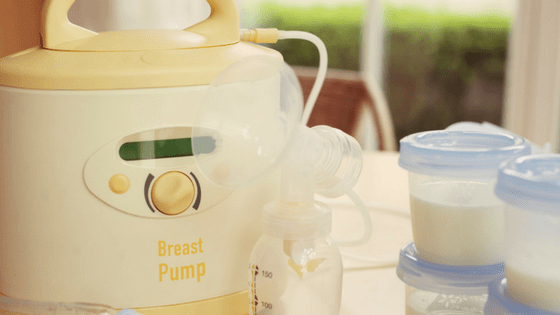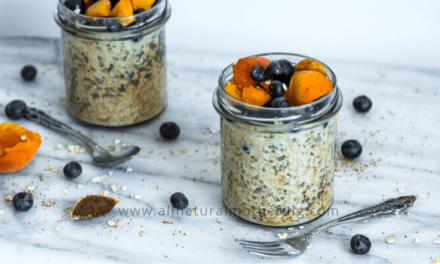I wanted to build a breast milk stash in the freezer before I head to work after my maternity leave was over.
Unfortunately, with my first baby, by the time I realized I needed a freezer stash, it was already around six months. My milk supply was stable by this time, and none of my milk-boosters were altering my supply.
I was in search of something more effective that would work miraculously.
I almost gave up on my dream freezer stash until Mr. Google introduced me to the term ‘Power Pumping.’
The more I researched and read about it, the more it made sense to me, and I was confident that it would work pump up my supply.
What is Power Pumping :
Power pumping is a way to mimic a baby’s cluster feeding pattern during growth spurts.
We all know that breast milk supply is a function of supply and demand. Meaning, the more the baby drains the milk, the more the body produces milk.
Power Pumping means pumping continuously for 20 minutes, then taking a break for 10 minutes and continuing to pump and rest for an hour.
What happens during cluster feeding?
Somewhere around the end of 6 weeks of age, my son would feed every ten minutes in the night. Cluster feeding happened when he hit a growth spurt and continued for a week. This was nature’s way of telling my body to make more milk to meet my baby’s growing appetite.
During cluster feeding, the baby drains the breasts frequently, signaling the body to make more milk.
The sucking motion of your baby stimulates the nerve endings of your breasts, signaling the pituitary glands to release the milk-making hormones, Prolactin.
Prolactin is essential for the synthesis of milk. Science states that when our breasts are fuller, there is slower milk production. On the other hand,? maximum milk production takes place when our breasts are empty. Source
Similarly, Power pumping mimics the cluster feeding pattern and tricks our brain into thinking there is a need for more milk.
The strategy behind power pumping is to empty the breasts frequently. Doing so will keep the Prolactin level up and thereby increasing milk supply.
Power Pumping must have’s:
Before you dive deep into blocking power pumping sessions make sure you have all the right tools to get started.
A comfortable glider:
Let me tell one thing – it’s going to hurt your back like crazy when you start your power pumping sessions.
Sitting and pumping an hour is no joke!
I had an epidural with my first baby, so don’t even ask about the excruciating back pain I would get after pumping.
So, get comfy in a glider or a rocker, and don’t say I didn’t warn you.
Pumping basket:
Having a designated basket put together with all the pumping essentials can save you a considerable amount of time when you are planning to power pump.
A basket or trolley is an excellent way to keep things organized, so you don’t have to unplug everything and go in search for a nipple cream or a milk storage bag in the middle of the session.
Few essentials to stock in your pumping basket :
- Double / Single Pump
- Pump electric cord
- Nipple cream
- Water
- Snacks
Something to remind you of your baby:
Ever experienced a let down when you hear your baby cry? It’s because your brain plays a role in milk production. Sometimes, your brain can kick start a let down as a reflex to your baby’s cry.
Where am I going with this? You got it! Keep a photo of your baby or a video nearby while your are pumping.
You know what works the best? An audio of your crying baby! Don’t get me wrong. I’m not a crazy lady who enjoys listening to my baby’s cry.
Trust me, your body responds to the cry of your baby quickly, and the milk flows out to comfort your baby.
Another thing that helped me a lot is closing my eyes, thinking about my nursing baby and telling myself that my baby needs milk.
Hands-Free Bra :
It hurts to even think about holding the breast pump for an hour. A hands-free pump is a must, so you can text your friend, read a book or have some snacks, all while pumping.
A Proper fitting Double Pump:
Another must have, in my opinion. Power pumping using a double pump is the most effective and is proven to give better results. That being said, it is not impossible to power pump using a sing pump. Albeit difficult, but not impossible.
Regardless of whether you are using a single or double pump, you need to double check that the pump is functioning well.
Make sure the pump parts are working. Replace old parts if need be. Most importantly, make sure that flanges are of the right size for your breasts.
This video below explains how to choose the right size for your breasts. In order to make sure that you have the right flange size:
- Nipple should move freely inside flange while pumping
- Nipple should not rub against the sides
- No extra areola area should be pulled into the flange
- You shouldn’t feel any discomfort while pumping.
Power pumping schedule :
Using a Double Pump:
Most recommended schedule using a double pump is this one below:
- PUMP – 20 minutes
- REST – 10 minutes
- PUMP – 10 minutes
- REST – 5 minutes
- PUMP – 10 minutes
- REST – 5 minutes
Obviously, pumping for an hour will have a more significant impact on your supply. However, if you can only pump for 30 minutes, then is better to pump shorter sessions rather than not pumping at all.
Here are some alternative schedule you can try.
- PUMP – 12 minutes
- REST – 8 minutes
- PUMP – 12 minutes
- REST – 8 minutes
- PUMP – 12 minutes
- REST – 8 minutes
or this one :
- PUMP – 10 minutes
- REST – 5 minutes
- PUMP – 10 minutes
- REST – 5 minutes
- PUMP – 10 minutes
- REST – 5 minutes
Using a Single Pump:
As I said earlier, using a double pump is optimal. Nevertheless, you can still use single pump if you have to.
When using a single pump, you alternate between both the breasts ans skip the rest time.
Here is a sample schedule using a single pump.
-
- PUMP – 10 minutes – LEFT BREAST
- PUMP- 10 minutes – RIGHT BREAST
- PUMP – 10 minutes – LEFT BREAST
- PUMP – 10 minutes – RIGHT BREAST
- PUMP – 10 minutes – LEFT BREAST
- PUMP – 10 minutes – RIGHT BREAST
You can Power Pump using the schedule mentioned above, once or twice a day. Power Pumping is done over and above the baby’s feeding session and should never replace a nursing session.
Power Pumping Boot Camp:
Some mothers turn their regular pumping sessions into a power pumping session for a short period of time. Lactation consultants refer to this as ‘Power Pumping Boot Camp’
Boot Camp pumping sessions is not only time consuming but also cumbersome.
A power pumping boot camp is done over the weekends, or when there are extra hands to help. The Boot Camp involves power pumping on every pumping session for a couple of days before returning to the regular pumping routine. Generally, moms attempting a boot camp, power pump four times a day for two days.
Considering the amount of effort required to do Power Pumping Boot Camp, I advise talking to your lactation consultant to see if there is a need for multiple power pumping sessions.
Taking Care of Mama:
Don’t take power pumping lightly. It consumes an enormous amount of energy.
-
- Stay Hydrated:?Keep a water bottle in your pumping station and drink up while resting.
- Snack in Between:?Including?galactagogue foods like oatmeal, garlic, spinach,nuts and fenugreek will promote milk production quickly along with power pumping.
- Soothe your Nipples:?Your nipples are going to cry out for help after the pumping sessions. Remember to take care of your girls. Apply nipple cream and soothe them. If you experience any pain, a cold compress will help relieve the strain on the nipples.
Top Tips to get the Milk Flowing:
-
- Breast Compression:?Massaging or squeezing your breasts while pumping helps the pump to drain your breasts better. At this point, you might already know that the whole point of power pumping is to empty the breasts, so more milk is made.
- Lean Forward:?Use gravity to your side. Many mothers have shared their success stories about how much difference leaning forward makes.
- Warm Massage:?Heat helps the milk flowing. Perhaps, you can commence your power pumping session after a hot shower. Maybe, you can use a warm washcloth and gently massage your breasts between each pumping interval.
- Relax:?Stress and anxiety can kill milk supply. Don’t sit there anxiously counting the drops you collect. Meanwhile, try to put your feet up and relax. Watch your favorite show or read a book.
Let’s Wrap Up:
Power Pumping is hands down the best technique to boost your milk supply. Whether you are dealing with low milk supply or wanting to amp up your milk to build a breastmilk stash, power pumping is the way to go!
However, do remember you won’t see results overnight. Some mothers can see a difference in supply within a few days, whereas, it can take a week for others.
Ever tried Power Pumping? Share your experience below and tell us if it had an impact on your milk supply.
Many moms struggle with low supply, share this post with your friend or Pin it to help another mama.
















